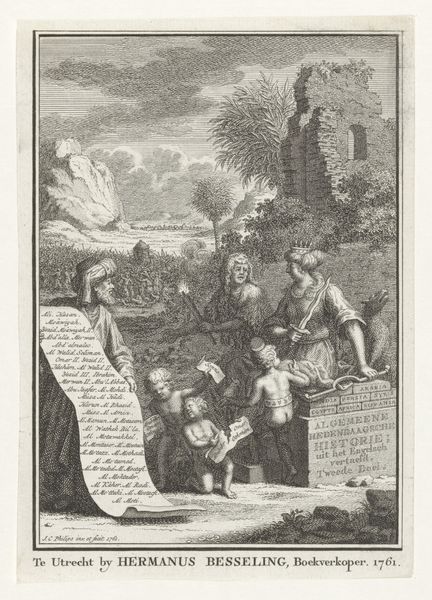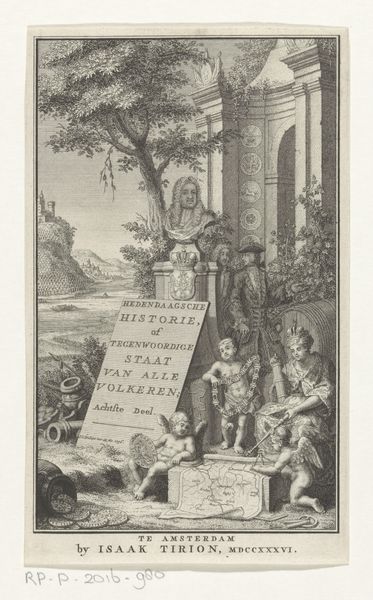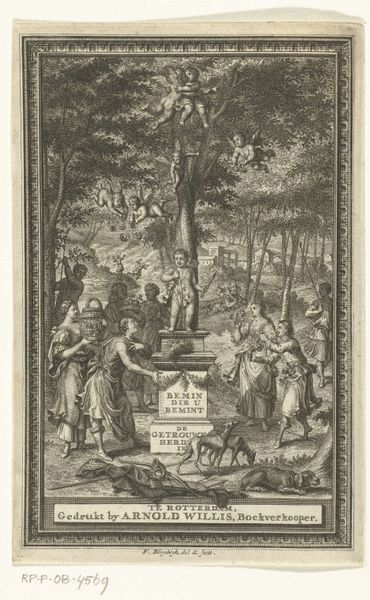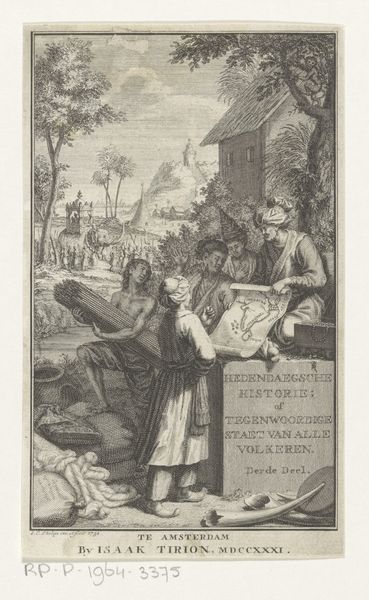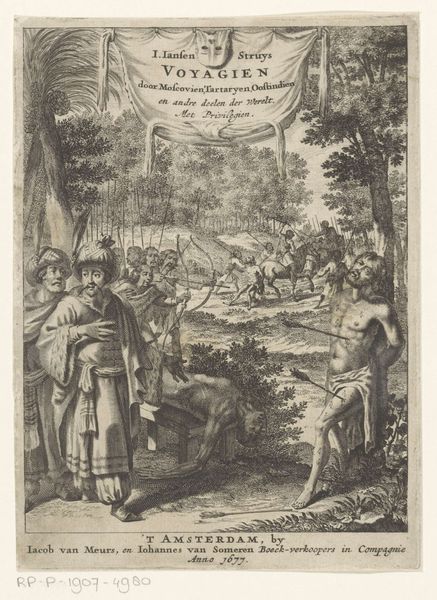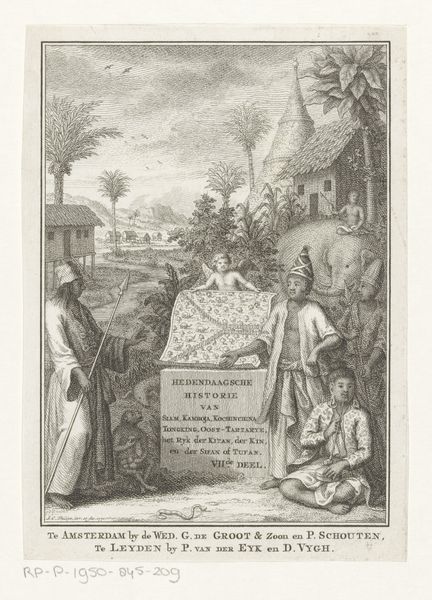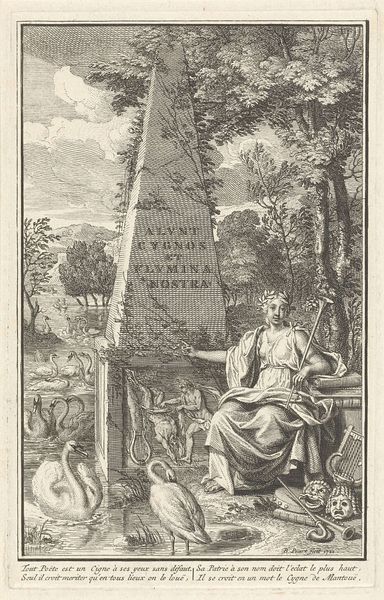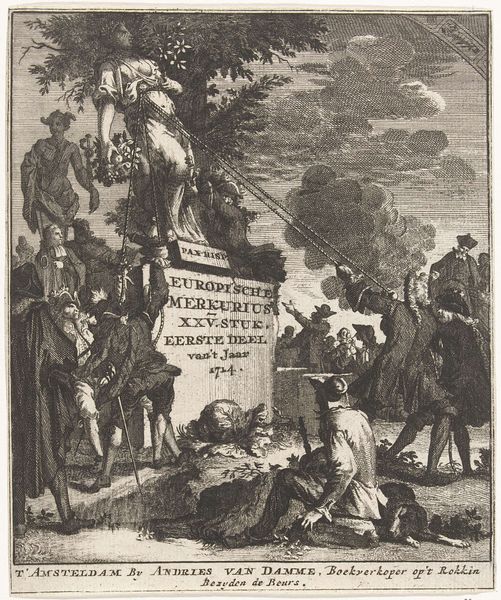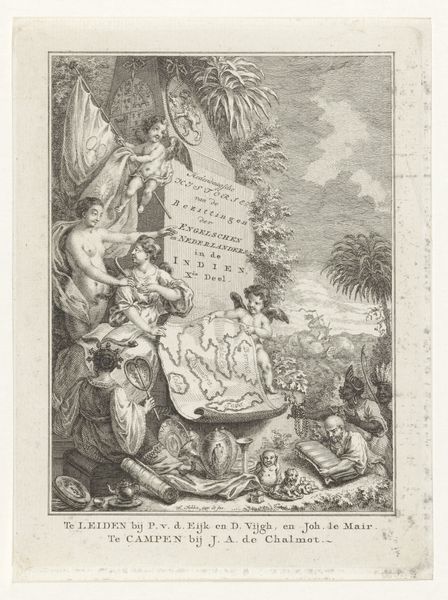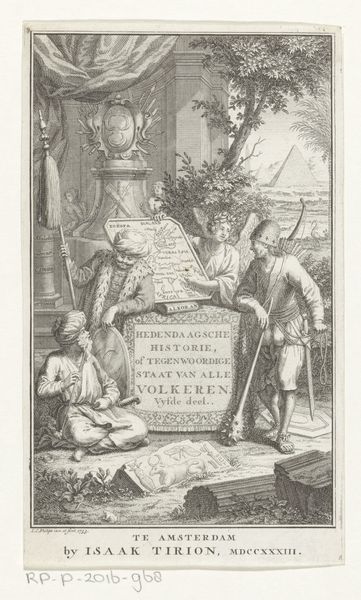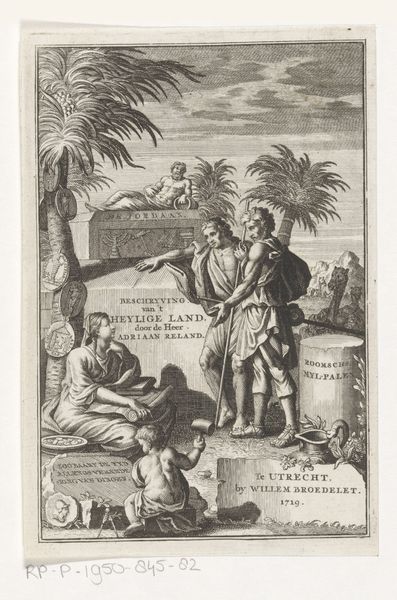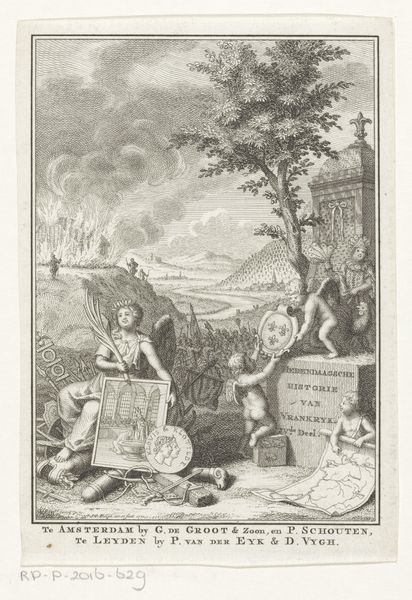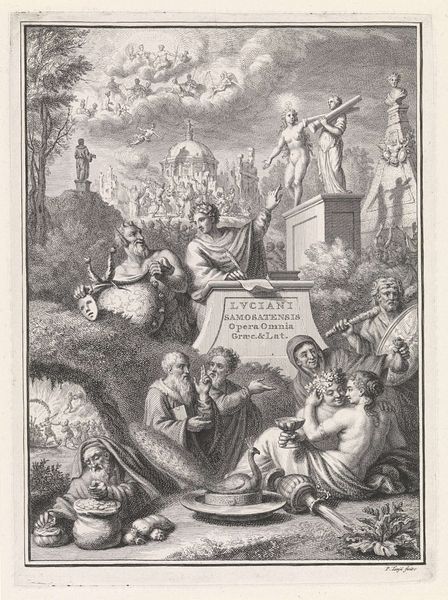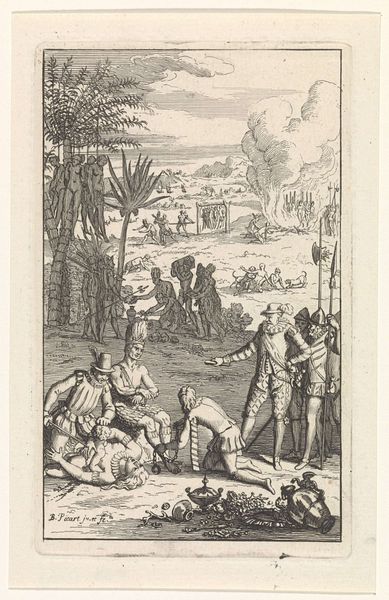
Allegorische voorstelling met Mohammed, Geschiedenis en Arabieren 1759 - 1760
0:00
0:00
print, engraving
#
allegory
#
baroque
# print
#
islamic-art
#
history-painting
#
engraving
Dimensions: height 167 mm, width 121 mm
Copyright: Rijks Museum: Open Domain
This allegorical print, made by Jan Caspar Philips around 1760, presents a vision of Mohammed, history, and the Arab world. Dominating the scene are symbolic figures and texts that reveal the era's perception of Islamic culture. At the center, we see figures holding tablets inscribed with religious precepts. These tablets are laden with judgements and reflect a worldview rooted in the Dutch Republic's historical context, specifically from the Age of Enlightenment, as the Dutch translated and studied foreign cultures from a western point of view. Consider, for example, how the motif of presenting religious or moral law on a tablet recalls Moses receiving the Ten Commandments. This comparison invites us to contemplate how different cultures codify moral and religious edicts. Such depictions underscore the psychological weight of cultural symbols and the impact of collective memory in shaping perceptions across time. The emotional power of these images lies in their ability to evoke deep-seated feelings of cultural identity and historical understanding. The cyclical nature of history ensures that these symbols will continue to resurface. Each time, they are reinterpreted and imbued with new meanings, shaped by the ever-evolving contexts in which they appear.
Comments
No comments
Be the first to comment and join the conversation on the ultimate creative platform.
